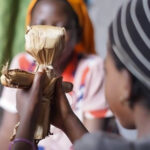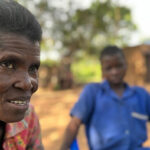Child marriage and teenage pregnancies remain some of the most pressing challenges in Uganda, driven by societal norms, poverty, and a lack of education. Despite numerous efforts to address these issues, the prevalence of early marriages and pregnancies remains alarmingly high. Addressing these harmful practices requires more than just legal frameworks and educational programs, it demands a fundamental shift in societal mindsets, collective action across all sectors, and the empowerment of young girls and boys alike.
A 2021 report from UNICEF revealed that 46% of Ugandan girls are married off before the age of 18, many of whom become pregnant shortly after marriage. This devastating statistic highlights the harsh reality faced by nearly half of Uganda’s young girls, who are deprived of their right to education, personal growth, and a future free from the burden of early childbearing. Early pregnancies often lead to dire consequences for both the young mothers and their children, perpetuating cycles of poverty and stifling opportunities for social mobility.
While Uganda has enacted laws such as the 1995 Constitution and the 2010 Domestic Relations Bill to criminalize child marriage, legal measures alone cannot transform entrenched cultural norms. To truly combat child marriage and teenage pregnancies, Uganda needs a multi-faceted approach. This includes legislative enforcement, grassroots community engagement, better access to sexual and reproductive health education, and robust support systems for girls and boys.
Doreen, a probational Officer in Bunyangabu District shared a presentation which underscores the importance of community involvement: “Para-social workers are integral to this fight. Our presence in communities allows us to identify cases early, provide immediate interventions, and connect families to vital resources that empower girls to stay in school and delay marriage.”
Community-based programs, such as those implemented by Bantwana, are instrumental in changing mindsets. These initiatives provide platforms for young girls to voice their concerns while actively engaging community influencers, religious leaders, local officials, and parents, in raising awareness about the dangers of child marriage and teenage pregnancies. Through collective efforts, communities can create environments where girls are supported to remain in school, avoid early pregnancies, and realize their full potential.
Education plays a pivotal role in breaking the cycle of child marriage. According to the Uganda Demographic and Health Survey (UDHS) 2016, girls with higher education levels are significantly less likely to marry young or experience teenage pregnancies. Yet, many drop out of school due to early marriages, pregnancies, or the lack of proper sanitary facilities. Increasing access to quality, inclusive, and gender-sensitive education is vital. Initiatives like the 2020 National Strategy to End Child Marriage and Teenage Pregnancy recognize this, placing education at the heart of the fight against early marriages.
Despite these efforts, the numbers remain sobering. In 2022, over 25,000 teenage girls aged 15-19 gave birth annually in Uganda, with many pregnancies linked to early marriages. The 2021 Uganda Demographic and Health Survey revealed that 17% of girls aged 15-19 had already begun childbearing. These statistics highlight the urgency of targeted interventions and greater commitment from all stakeholders.
Another critical issue is the lack of adequate support for teenage mothers, who often face stigma, limited healthcare access, and insufficient social services. Strengthening these systems and providing vocational training, healthcare, and financial support for teenage mothers is essential to breaking the cycle of poverty and empowering them to rebuild their lives.
During her presentation, Doreen also emphasized the power of collaboration: “The 16 Days of Activism remind us that addressing gender-based violence, including child marriage, requires everyone, families, communities, schools, and governments, to work together. It’s about creating sustainable solutions that uplift and protect our girls.”
In conclusion, Uganda has made significant strides in addressing child marriage and teenage pregnancies, but more work remains. By combining legal reforms, community engagement, accessible education, and support for teenage mothers, the nation can ensure a brighter future where every girl has the opportunity to thrive. Together, we can break the cycle and champion a generation of empowered girls who are free to pursue their dreams.
References:
UNICEF. (2021). UNICEF Uganda Annual Report 2021. Retrieved from https://www.unicef.org/uganda/media/13811/file/UNICEF%20Uganda%202021%20Annual%20Report.pdf
Uganda Demographic and Health Survey (UDHS). (2016). Uganda Health Survey: Key Findings. Retrieved from https://www.ubos.org/uganda-demographic-and-health-survey
Ministry of Gender, Labour and Social Development (MGLSD). (2020). National Strategy to End Child Marriage and Teenage Pregnancy. Retrieved from https://www.unicef.org/uganda/media/13666/file/National%20Strategy%20to%20End%20Child%20Marriage%20and%20Teenage%20Pregnancy%202022-2027.pdf

















1 Comment
NAMONO ESTHER
October 14, 2025ending early marriage and teenage pregnancy requires the involvement of the entire community, in my locality in bududa district in eastern Uganda, a few of my agements are sent for marriage by their own parents ,the parents should first be made to let their girls make their own choices, it has been a source of income through dowry, the old men are not even punished for getting young girls pregnant,the parents to the girl will rush to pick dowry and in the long run they are supporting early marriage and teenage pregnancy, I want to work with you to end this vice